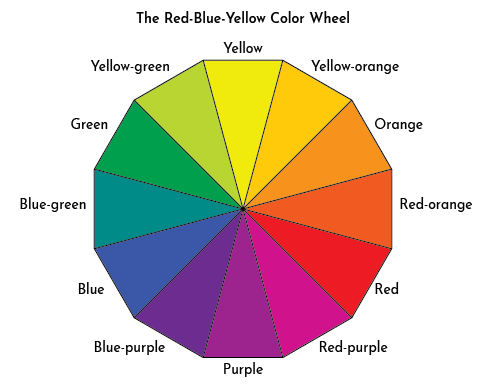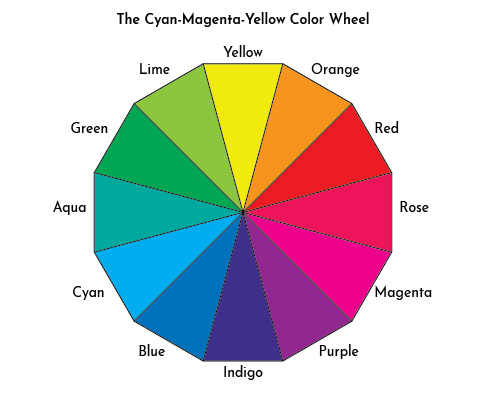The True Primary Colors
- Published:
- Length: 341 words
- Reading Time: 2 minutes
The 2021 SAQA Seminar — which focused on color — got me thinking about one of my own pet peeves: the Red-Blue-Yellow (RBY) color model.
The RBY color model is based Isaac Newton's experimentation with glass prisms and color. He used glass prisms to refract light, which led to his discovery of the visible light spectrum and further solidification of the theory that Red, Blue, and Yellow are the three primary colors. (That's where the term "Newtonian color wheel" comes from.)

Hundreds of years ago, many pigments was limited by cost and availability. RBY color theory was popularized because it meant artists only needed three pigments to mix all other colors. This color theory has persisted for centuries. It's tradition.
The problem is...Red and Blue aren't actually primary colors.

There are colors that cannot be created by mixing Red, Blue, and Yellow. Furthermore, Red and Blue themselves can be mixed from other colors, meaning they are Secondary colors, not Primary.
Have you ever wondered why, if Red and Blue are Primary Colors, does your color printer have Cyan and Magenta ink? Thanks to modern science and the invention of color printing, we now have the much more accurate Cyan-Magenta-Yellow (CMY) color model. In order to print the full myriad of tens of thousands of colors that can be produced by mixing dyes and pigments, printers have to use the true primary colors: Cyan, Magenta, and Yellow.

This entertaining YouTube video does an excellent job demonstrating how Cyan, Magenta, and Yellow can be mixed to make Red and Blue — and, bonus, why purple is a lie.
Food for thought: Since Magenta is the only primary color that doesn't have a wavelength, it couldn't be discovered in Newton's experiments with prisms. Newton predated the discovery of Magenta by more than a century, by which time the RBY color model was already well established.
